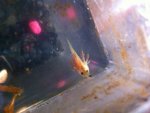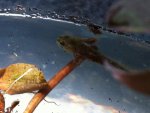Greatwtehunter
New member
- Joined
- Jul 1, 2008
- Messages
- 2,297
- Reaction score
- 73
- Points
- 0
- Age
- 41
- Location
- Roanoke, VA
- Country
- United States
- Display Name
- Justin
I put them aquatic and leave them aquatic until either they lay eggs or they've been in there for 2 days, which ever comes first. If they don't lay within those 2 days then I put them back terrestrial and then try again in 2 or 3 weeks.



